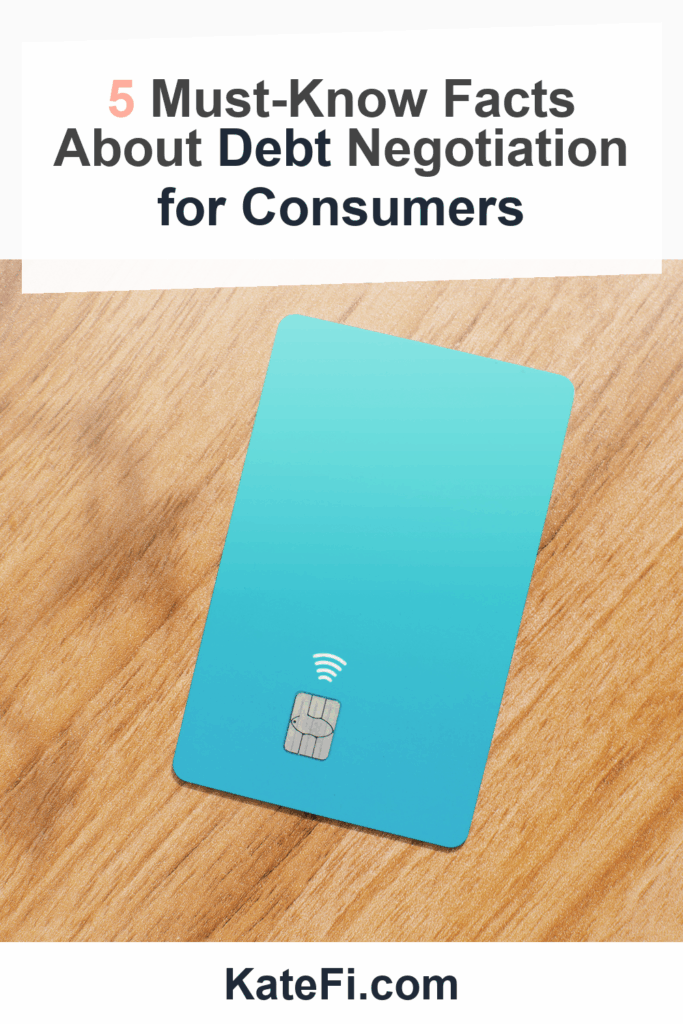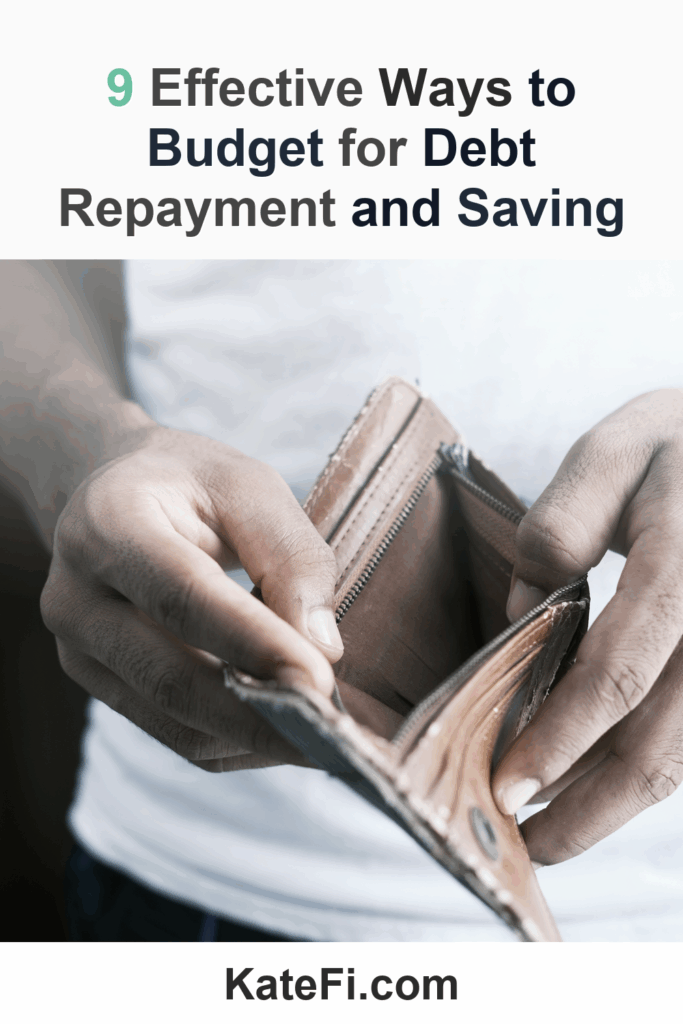10 Proven Tips to Negotiate Your Credit Card Debt Down by 50%
Credit card debt can feel overwhelming, especially if you’re juggling multiple accounts with high-interest rates. If you’re looking for ways to regain control over your finances, negotiating your credit card debt down could be a solid solution. Here, we’ll explore 10 proven tips to help you achieve a 50% reduction in your credit card debt. We’ll also compare different debt relief strategies like settlement, consolidation, and Debt Management Plans (DMP) to help you determine which option is best for your situation.
Love our content? Show your support by following us — pretty please!🥺
FOLLOW ON PINTEREST
Hi! I’m Kate, the face behind KateFi.com—a blog all about making life easier and more affordable.
Before diving into the tips, it’s crucial to note that results and eligibility vary by individual circumstances and state regulations. If you need personalized assistance, consider getting a free consultation to review your options.
1. Understand Your Current Financial Situation
Understand pros/cons of settlement vs consolidation vs DMP for your exact mix of debts.
Not available in IL, KS, OR, TN, UT, WV.
The first step in negotiating your credit card debt is to have a clear picture of your financial landscape. Gather your monthly income, expenses, and total debt figures. Create a simple spreadsheet or checklist to visualize your current state. This will empower you during negotiations and give you a solid understanding of how much you can realistically afford to pay back.
Checklist:
- List all your credit cards, including the balance and interest rate.
- Calculate your total monthly income.
- Itemize your monthly expenses.
Having this information on hand will make it easier to communicate with creditors and professionals.
2. Explore Your Options: Settlement vs Consolidation vs DMP
Lower Your Unsecured Debt
If you have $5,000+ in credit card or personal loan debt, a free consult can review options like settlement or hardship plans.
- One-on-one call to review your debts and goals
- See potential monthly payment reductions
- No obligation to enroll
Not available in IL, KS, OR, TN, UT, WV.
Each debt relief strategy has its own pros and cons. Understanding these can help you choose the most suitable path.
| Method | Pros | Cons | Ideal For |
|---|---|---|---|
| Debt Settlement | Potentially lower overall debt | Can negatively impact credit score | Those facing financial hardship |
| Debt Consolidation | Single monthly payment, often lower rates | Fees may apply; might extend repayment timeline | Those with high-interest debt |
| DMP | Structured plan, may reduce interest rates | Typically requires a commitment | Those needing guidance and support |
Choosing the right method will depend on your financial situation and long-term goals. If you’re considering one of these options,
✅ See If You Qualify for Debt Relief
to get tailored advice.
3. Open Communication with Creditors
What You’ll Learn on the Call
- Estimated timeline and monthly payment range
- How credit may be affected in the short term
- What documents to gather to move faster
Not available in IL, KS, OR, TN, UT, WV.
Once you’ve assessed your financial situation and chosen a path, it’s time to engage with your creditors. Be honest about your struggles, and express your desire to settle or negotiate lower payments. Creditors may be more willing to work with you than you might expect.
Script to Use:
- “Hi, I’m [Your Name], and I’ve been having trouble managing my payments. I’m looking to negotiate a lower amount that I can realistically pay back. What options are available for me?”
This transparency can lead to fruitful discussions that may result in lowered payments or settlement offers.
4. Prepare to Make an Offer
👉 Start Your Free Debt Relief Review
Not available in IL, KS, OR, TN, UT, WV.
When negotiating, prepare an initial offer that is lower than what you can afford. This gives you room to maneuver during discussions. If you owe $10,000, consider starting at $5,000 as your negotiation target. Be sure to emphasize that you are willing to pay immediately if an agreement is reached.
✅ See If You Qualify for Debt Relief
5. Timing is Everything
Timing your negotiations can significantly impact your success. Call during off-peak hours, typically mid-week and in the morning, when representatives are less busy and more willing to negotiate. Also, timing your requests around special events or seasons may result in more favorable offers.
6. Consider Professional Help
If negotiating directly with creditors feels daunting, consider hiring a debt relief company. These professionals specialize in negotiations and often have established relationships with creditors, increasing your chances of a successful outcome. Before committing, ensure the company has a good reputation and clear terms.
Remember, getting a free consultation is a great way to assess your situation without any pressure.
7. Gather Necessary Documentation
When you begin negotiations, having your documents organized can expedite the process. Gather pay stubs, bank statements, and a list of your debts. Presenting these documents can enhance your credibility and show creditors that you are serious about settling your debt.
Documents Checklist:
- Recent pay stubs
- Bank statements for the last three months
- List of all debts with account numbers
8. Understand the Impact on Your Credit Score
It’s important to note that debt relief methods can impact your credit score. Settlement, in particular, may result in a temporary drop. This may deter some, but if you’re struggling to make payments, the long-term benefits may outweigh short-term consequences. If you negotiate successfully, you can gradually rebuild your credit score over time.
Consider this when weighing your options, and seek guidance if you’re uncertain. Our team is here to help;
✅ See If You Qualify for Debt Relief
.
9. Create a New Budget Post-Negotiation
Once you’ve successfully negotiated your debt down, it’s vital to create a sustainable budget to avoid falling back into debt. Set aside money for your negotiated payments and ensure you have a plan to handle unexpected expenses.
Budgeting Tips:
- Track monthly expenses closely.
- Allocate a specific amount for discretionary spending.
- Build an emergency fund, even a small one, to cushion against future issues.
10. Stay Committed to Your Debt-Free Journey
Finally, the key to long-term success in debt negotiation is commitment. Stay disciplined in your payments and continually monitor your financial situation. Celebrate small victories and be prepared to adjust your plans as needed.
—
In conclusion, negotiating your credit card debt can be a viable way to reduce what you owe significantly. Whether you opt for settlement, consolidation, or a DMP, understanding your options is essential. Remember that your financial health is worth the effort.
If you’re feeling overwhelmed, or unsure about your next steps, getting a free consultation could provide the insight and guidance you need to get on the path to financial freedom.
Important: This content is for education only—not legal, tax, or financial advice. Results and eligible programs vary by situation and state. Fees apply if you enroll and complete a program. Debt relief can affect credit; missed payments may lead to collections/lawsuits. Not available in IL, KS, OR, TN, UT, WV.






















